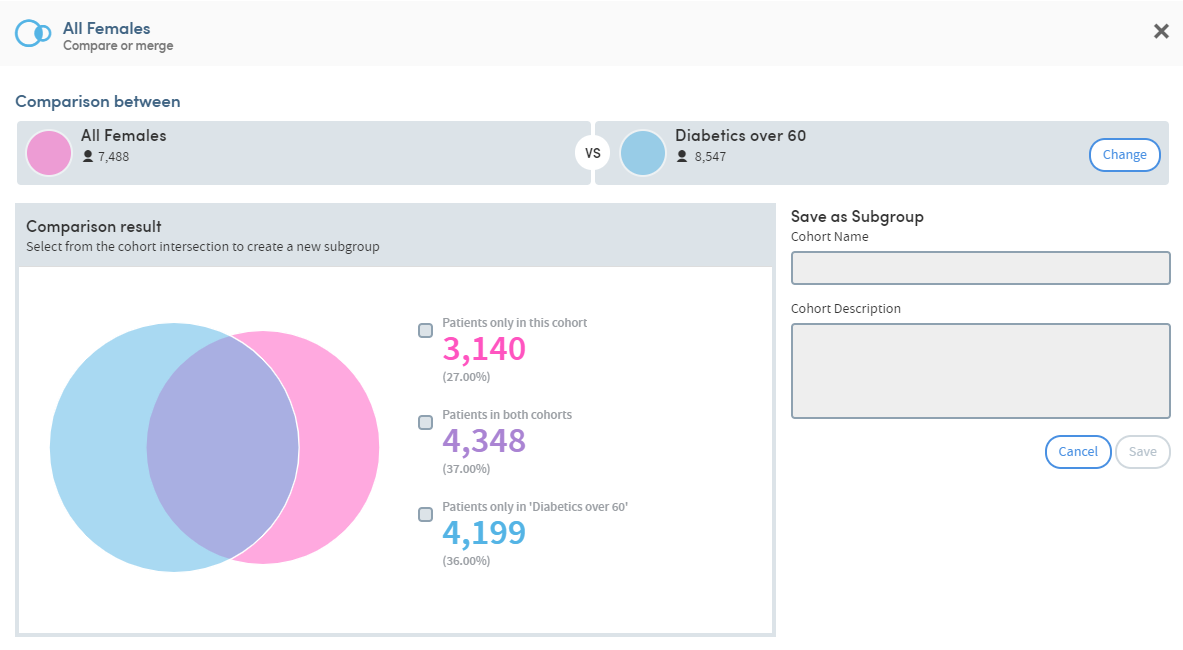Comparing and merging cohorts
The Compare or merge function allows you to compare a cohort with any other cohort which is available in your My Cohorts area. It enables you to explore the relationship between different cohorts of patients without having to produce formal reports.
A dynamic output shows you the number of patients who are in both cohorts, and the number in one cohort but not the other:

If you’re particularly interested in one of these groups of patients, you can save it as a special type of cohort: a subgroup. You can then run reports on this subgroup if you wish to.
You can choose to create a subgroup of:
- Patients in your first cohort who are not in your second.
- Patients in your first cohort who are also in your second.
- Patients in your second cohort who are not in your first.
- Patients who are in either your first or your second cohort (or both).
For example, having compared two cohorts, if you create a subgroup by selecting all three overlap options, you will create a subgroup that merges the two cohorts compared. This effectively enables you to use the operator OR in combining two cohort definitions to produce a cohort of a complexity not otherwise producible.
The Compare or merge feature enables you to define subgroups of patients that it would be difficult or impossible to do using a single set of filtering criteria. It enables you to ‘place brackets’ around one or more set of criteria used to define a cohort and then combine them with another bracketed set of criteria.